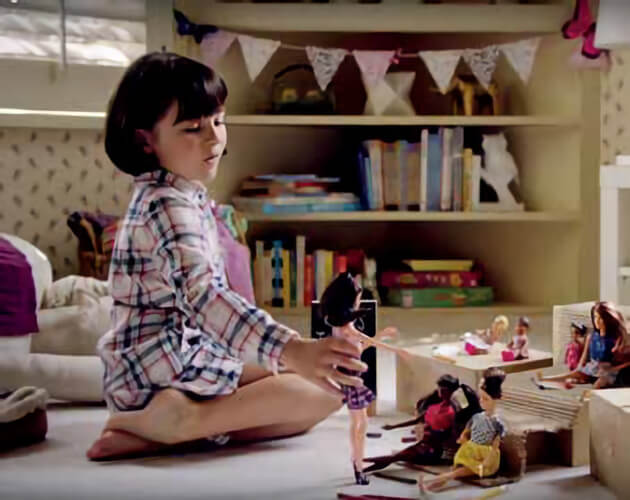Decide for good
Last month, the massive ANA Masters of Marketing conference took place in Orlando, Florida, drawing 2,700 delegates to hear how modern marketers are grappling with change – or seizing it with both hands – to drive growth.
Star of the two-and-a-half days was Gary Vaynerchuk, chief executive of VaynerMedia, a peripatetic presence with a machine-gun mouth, who took a shock-jock approach to his packed, opening-morning session. Speaking without slides or notes, he spat out a 30-minute rant berating marketers for, among other things, their wayward approach to measurement: “You’re scoring the wrong shit.”
At the end of his session, ANA president Bob Liodice – who, somewhere over the years, has missed out on his true vocation as a game-show host – asked Vaynerchuk the question he asks all speakers: what is the one nugget that everyone in the audience should take back to their offices for their colleagues on Monday?
Vaynerchuk took the briefest pause, turned to the audience and said “You’re gonna die”, before extemporising a fair bit from there.
The rest of the conference then settled into its usual format of how-we-did-it success stories of marketers overcoming the odds. The three most popular buzzwords, in order, were “purpose”, “storytelling” and, inevitably, “disruption” – down from number one last year.
A different theme, linking two slots from brands in very diverse categories, was “courage”, which usually plays well to an ANA crowd. This time, though, there was a muted sense that both brands were merely bowing to the inevitable, doing things they really should have done years ago.
Norman de Greve, chief marketing officer of CVS Health, the US’s biggest pharmacy chain, described the courage it took to stop selling cigarettes in its 9,600 outlets, thus putting a line through $2bn of revenue. It had been a huge struggle internally but one that he, with a moving story of a father who had died of lung cancer when he was seven, was determined to push through.
Without belittling the impact of a $2bn sacrifice, you have to ask what a pharmacy was doing selling fags at all and why it hadn’t taken the hit in, say, 1975. This would be like popping into Boots for your 20 Rothmans.
The reason given for finally taking the step was a change in name – from CVS Caremark to CVS Health, as though the inclusion of that new word had made them suddenly realise what business they had been in all along.
Juliana Chugg, global core brands officer at Mattel, gave a different reason for taking a big plunge with the company’s “iconic” Barbie doll: ten quarters of negative growth. The audience heard how Barbie finally got some ethnic variety and some alternatives to her implausibly slender figure – which had long driven mothers to criticise the brand for its stereotypical portrayal of women.
 Again, the internal battles were vividly described, but the most-endorsed question on the real-time Q&A board at the end gave the audience verdict: “Isn’t this something you should have done decades ago?” It was ducked.
Again, the internal battles were vividly described, but the most-endorsed question on the real-time Q&A board at the end gave the audience verdict: “Isn’t this something you should have done decades ago?” It was ducked.
But then, most of us are ducking issues every day – little changes that we know, for the societal good, should be made but which we also know would involve earthquakes internally. Our error is one of equivocation between those two worlds. But they are not remotely equal; while we feel the internal heat more, it’s the outside societal force that should calibrate our conscience and guide our actions.
Perhaps it’s the asymmetry of decision-taking that’s the real problem here: a declared change versus unvoiced continuation. But what if the option of leaving things as they are was also forcibly framed as an active decision, one to be made each year?
An active decision to keep offering fizzy drinks on promotion, despite evidence that it increases overall sugar consumption. An active decision to keep moving loyal utility customers on to higher tariffs. Or an active decision to keep selling cigarettes in a pharmacy – as CVS Health’s five biggest competitors still do.
Crystallising inaction as considered, declared decision-making would shame us into making those high-stakes changes sooner. Not because we’re courageous, but because it’s the right thing to do.
Our chief financial officers may still come at us, of course, and demand to know if we realise just how much our proposed changes will hit the bottom line. But we now have a pithy answer for that: “You’re scoring the wrong shit.”
Should they persist, and should we sense our resolve slipping, there is a sinew-stiffening mantra we can whisper to ourselves: “You’re gonna die. What do you want as your epitaph?”
The US-based Association of National Advertisers runs conferences throughout the year, but this is the big one – attracting thousands of delegates from the worlds of marketing, advertising, media and technology.
The event always fronts industry-leading speakers – a list that in recent years has included Jim Farley (Ford), Marc Pritchard (Procter & Gamble), Dana Anderson (Mondelez International), Keith Weed (Unilever) and Jonathan Mildenhall (Airbnb).
Attendance isn’t cheap: cost for full participation, for non-members, is $2,495. It’s worth it.
Best speaker soundbite from recent years: Tony Pace, of Subway, sharing a definition of his brand’s target audience in 2013: “Anyone with a mouth and a wallet.”
